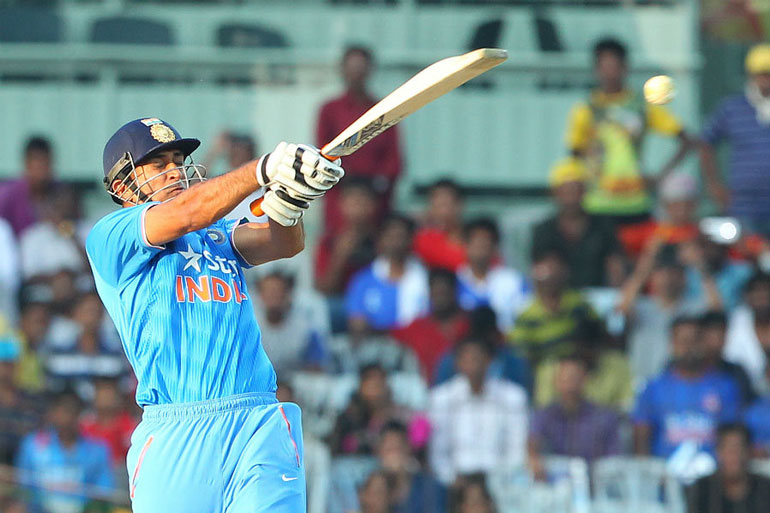Monday Jan 13, 2025
Monday Jan 13, 2025
Saturday, 24 October 2015 00:00 - - {{hitsCtrl.values.hits}}

ESPNCricinfo: One-day cricket in India appears to have been given a makeover according to MS Dhoni. A total less than 300 could still be match-winning, and the back end of an innings might actually end up as one of the lowest phases of run-scoring.
Dhoni’s reasons: the ball goes soft, so it does not come onto the bat, and therefore stroke-play becomes hard. Also, dry pitches and outfields ensure the ball gets scuffed up and offers reverse swing. And finally, the option of having an additional fielder on the boundary - five instead of the earlier four – means big shots will not necessarily fetch big runs.
“Now as we are seeing in the 40th to 50th (overs), it’s not easy just to go in and slam the big shots and get 80-90 runs. You’ll see most of the sides saying, ‘Last 10, if you are chasing, you shouldn’t have more than 65 runs or 70 runs’. That also you have to have a good day,” Dhoni explained.
For context, in the last 10 overs in Chennai, India made 69 and lost five wickets. South Africa hit 64 and lost three. A similar break-up happened in Rajkot as well: India 67 for 4, and South Africa 60 for 3. Only once has a team scored over 100 runs in this period, with AB de Villiers at the helm in Kanpur.
“But it may change, depending on the wicket, the amount of reverse swing that the bowlers are getting (here) if it’s not there then maybe they will score a bit more. Or if the bowlers don’t execute well. But on a good day, when they are bowling well, it will be very difficult to get something like 80 or 90 in 10 overs. That used to be the case with the previous rules.”
Dhoni believes slow pitches will allow bowlers a lot more margin for error in the slog overs. He feels more teams will stop drilling their bowlers to deliver inch-specific yorkers and will follow a ‘new strategy’ of bowling length and back-of-a-length deliveries to curb the batsmen. Having extra protection in the deep has also helped in that regard.
“And more than the short deliveries, it’s the length deliveries that are more difficult to hit because with the reverse swing, the bowlers they can actually cramp you. Even the ones that are short, they are short enough but they don’t get to the same height (as the batsman is expecting) which means you have to take that risk of playing the big shot. So it’s like the new strategy that has been put by a lot of sides.
“On a slower wicket, it’s not easy to play the big shots and these are the bigger outfields. And that scuffed up ball, it doesn’t come off the wicket so when you dig in short you have to play the big shot and it’s not easy to always clear the boundary. So with the new rule changes, with that extra fielder outside, the batters who come after especially the 40th over, straight away if they are supposed to go in and play the big shot they’ll find it difficult.
“Bowl just back of a length, slip in the odd yorkers, but as of now on these conditions and these wickets, it’s something that’s really working. But it’s important to be ready with a plan B because it will work but you don’t know how long it will work because batsmen will also look to try and get new ways of scoring runs and you may not get the same kind of reverse swing in every game. The ball won’t get scuffed up in every game so all of a sudden, when you play on a wicket with a bit more pace, you can use the pace of the fast bowler. In smaller outfields, maybe the fast bowler will find it slightly difficult to have the same strategy.”